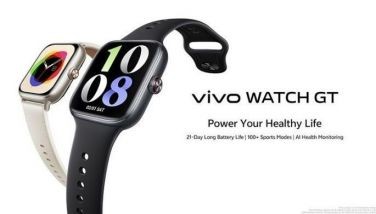‘Green’ plan for mobile handsets up
July 23, 2005 | 12:00am
A recent Reuters report on the United Nations’ plan to work out an agreement with handset makers and operators to scrap metals in mobile phones made waves all over the tech planet. Whether one looks at it as an effort to bring down the cost of mobile gadgets by substituting plastics for metal or as a move to control the disposal of hazardous waste, the plan is commendable.
While attempts at mobile phone recycling have been introduced in the United States and some parts of Europe, the idea has yet to catch on in many parts of the world. In the meantime, at least a billion handsets are expected to be sold yearly by 2009. With the lifespan of a cellphone averaging only 18 months, it is easy for environmentalists to anticipate a large accumulation of waste products that could cram the landfills.
Where do cellphones go when they outlive their uses?
Here in the Philippines, phone recycling is never a problem as the handsets are usually given to other members of the family or sold in the second-hand market. But when these hand-me-downs are used up and have lived out their lifespans, where do they go other than being stored in cupboards and shelves?
According to t-mobile.com, a wireless phone handset consists of 40 percent metals, 40 percent plastics, and 20 percent ceramics and other trace materials.
Moreover, mobile phones have printed circuit boards (PCBs), liquid-crystal display panels (LCDs), keypads, antenna, speakers, microphones and batteries that contain toxins harmful to the environment.
Green Solutions, a European organization that offers solutions for business and the environment, said "arsenic (in chips made from gallium arsenide), antimony, beryllium, brominated flame retardants, cadmium, lead (used in the solder that joins the parts), nickel, palladium, silver, tantalum, zinc and mercury are contained in components that make up a mobile phone."
When these components are discarded and leak into groundwater from landfills, it can "severely impact the human food chain," it said.
Phone makers like T-mobile have actually launched a recycling program in the US that promotes the recycling and reuse of old wireless devices that might otherwise end up in landfills.
This program also includes handsets, wireless PDAs, wireless computer cards, and accessories such as spare batteries, phone charges, cables, headsets, earpieces, cases, clips, and cradles.
"The goal of the ‘Get More, Give More’ project is to protect the environment through reuse or proper disposal of wireless equipment and accessories," said T-mobile on its website.
According to the Reuters report, the UN is actually working with the industry and mobile phone makers and operators such as Nokia and Vodafone as part of the UN Basel Convention on the control and disposal of waste. The body met in Geneva, Switzerland last July 5 to prepare for the bi-annual conference in Nairobi in 2006.
This effort is expected to bring together environmental campaigns already in place in the US, Europe and Japan.
A release from the Basel Convention-United Nations Environment Prog-ramme website at www.basel.int cited that telecom operators Vodafone, France Telecom/Orange and Bell Canada are joining the Mobile Phone Partnership Initiative (MPPI).
These telephone operators, according to the Basel Convention, will "join the 12 largest manufacturers of mobile phones worldwide, which have been members of the MPPI since its beginning."
The MPPI is actually initiated by the Swiss government and is composed of experts from the signatories of the Basel Convention.
But beyond the concern for the environment, the coming of plastic mobile phones may also provide a key solution to the global concern for the so-called digital divide.
While the number of mobile subscribers is now inching close to the two-billion mark, it is estimated that four billion people do not have cellphones, three billion of whom cannot possibly hope to own one.
The drive to make handsets more affordable, especially in the developing world, is not new. Earlier this year, the 3GSM World Congress held in Cannes, France announced that Motorola was going to produce a sub-$40 mobile phone under its Emerging Market Handset program. And the goal is to drive down the cost further to $30.
Cheap, environmentally friendly handsets may take long in coming. But as Green Solutions sees it, now is the time to ensure that "today’s mobile phone technology will never become tomorrow’s environmental problem."
While attempts at mobile phone recycling have been introduced in the United States and some parts of Europe, the idea has yet to catch on in many parts of the world. In the meantime, at least a billion handsets are expected to be sold yearly by 2009. With the lifespan of a cellphone averaging only 18 months, it is easy for environmentalists to anticipate a large accumulation of waste products that could cram the landfills.
Where do cellphones go when they outlive their uses?
Here in the Philippines, phone recycling is never a problem as the handsets are usually given to other members of the family or sold in the second-hand market. But when these hand-me-downs are used up and have lived out their lifespans, where do they go other than being stored in cupboards and shelves?
According to t-mobile.com, a wireless phone handset consists of 40 percent metals, 40 percent plastics, and 20 percent ceramics and other trace materials.
Moreover, mobile phones have printed circuit boards (PCBs), liquid-crystal display panels (LCDs), keypads, antenna, speakers, microphones and batteries that contain toxins harmful to the environment.
Green Solutions, a European organization that offers solutions for business and the environment, said "arsenic (in chips made from gallium arsenide), antimony, beryllium, brominated flame retardants, cadmium, lead (used in the solder that joins the parts), nickel, palladium, silver, tantalum, zinc and mercury are contained in components that make up a mobile phone."
When these components are discarded and leak into groundwater from landfills, it can "severely impact the human food chain," it said.
Phone makers like T-mobile have actually launched a recycling program in the US that promotes the recycling and reuse of old wireless devices that might otherwise end up in landfills.
This program also includes handsets, wireless PDAs, wireless computer cards, and accessories such as spare batteries, phone charges, cables, headsets, earpieces, cases, clips, and cradles.
"The goal of the ‘Get More, Give More’ project is to protect the environment through reuse or proper disposal of wireless equipment and accessories," said T-mobile on its website.
According to the Reuters report, the UN is actually working with the industry and mobile phone makers and operators such as Nokia and Vodafone as part of the UN Basel Convention on the control and disposal of waste. The body met in Geneva, Switzerland last July 5 to prepare for the bi-annual conference in Nairobi in 2006.
This effort is expected to bring together environmental campaigns already in place in the US, Europe and Japan.
A release from the Basel Convention-United Nations Environment Prog-ramme website at www.basel.int cited that telecom operators Vodafone, France Telecom/Orange and Bell Canada are joining the Mobile Phone Partnership Initiative (MPPI).
These telephone operators, according to the Basel Convention, will "join the 12 largest manufacturers of mobile phones worldwide, which have been members of the MPPI since its beginning."
The MPPI is actually initiated by the Swiss government and is composed of experts from the signatories of the Basel Convention.
But beyond the concern for the environment, the coming of plastic mobile phones may also provide a key solution to the global concern for the so-called digital divide.
While the number of mobile subscribers is now inching close to the two-billion mark, it is estimated that four billion people do not have cellphones, three billion of whom cannot possibly hope to own one.
The drive to make handsets more affordable, especially in the developing world, is not new. Earlier this year, the 3GSM World Congress held in Cannes, France announced that Motorola was going to produce a sub-$40 mobile phone under its Emerging Market Handset program. And the goal is to drive down the cost further to $30.
Cheap, environmentally friendly handsets may take long in coming. But as Green Solutions sees it, now is the time to ensure that "today’s mobile phone technology will never become tomorrow’s environmental problem."
BrandSpace Articles
<
>
- Latest
Latest
















